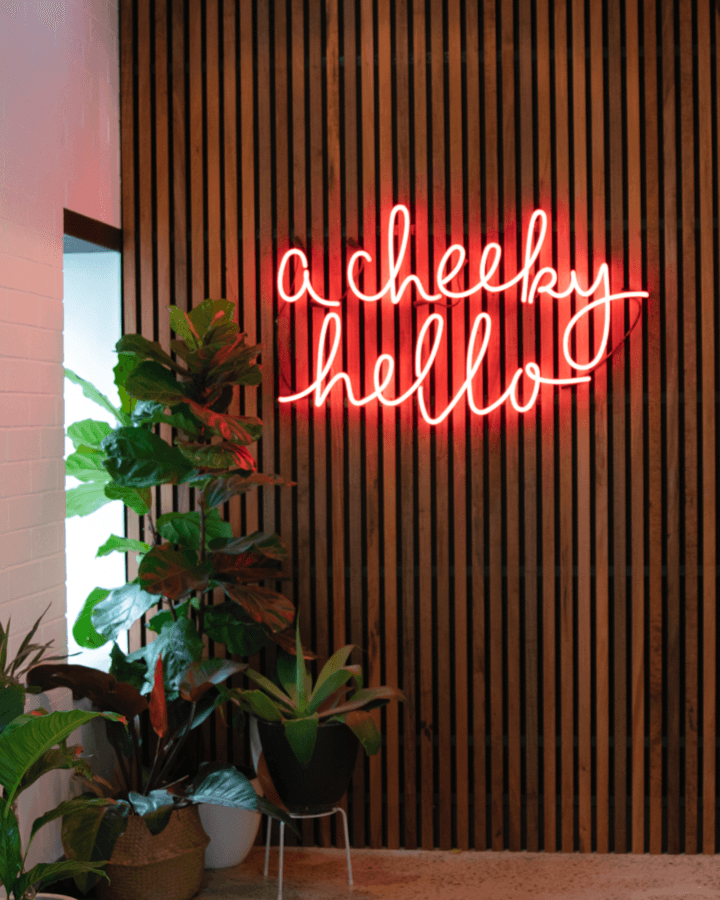When words mean more than they mean
At Chello we describe our role as the bridge between brand and content. One way of articulating this is that it’s our role to fight for content’s story and meaning, ensuring that every piece of content is connected to the overall brand strategy and identity. That it retains this connection when more tactical considerations come into play — talk of ‘the funnel’ etc.
For me as a copywriter this means carefully considering the meaning of each and every word. But words can be misleading. Depending on the context and combination, words can create meaning beyond what they mean. The real goal is that when you start to use your words in a considered and identifiable way, you start to sound like a brand and not just a category.
This is where your voice and tone guidelines come into play.
Verbal guidelines are a brand tool, not brand poetry
Guidelines, every brand has them, in one form or another. Some live by them, others sniff at them; labelling them as pointless busywork — something half the company will look at once, then never again. For the non-believers I would put it to you that you’re just building them wrong. For the most part, visual identity guidelines are usually pretty functional and easy to apply. But for some reason this is not always the case with their verbal siblings. And it starts with the name.
Tone of voice? Tone and voice? Voice and tone? You see it all. But when you start with the name and break it down, it starts to make it sense. If your voice is the consistent element that contains your character, and your tone is the piece that shifts — providing nuance depending on the context and situation — you start to see voice and tone as a functional system. A brand tool and not just poetic waffle. Now it starts to become something useful. Save the brand poetry for your Brand book.

Inspire words, don’t define them
Your verbal guidelines should have function and purpose beyond being just a set of approved messages from the Brand & Marketing team — a tool that guides not prescribes. Easy to understand, easy to remember. Components that are applied to the context of the situation. Allowing the people who use it to add their own nuance. After all, this is what sets a human writer apart from AI — but we’re not getting into that conversation here…
“The most important thing is the team of people who use and shape the language. A guide might reflect that — not the other way around.”
– Eric Johnson, Head of Content at Typeform
When we start to overuse the same ‘safe words’ (kinky) they begin to lose meaning. Take the word ‘purpose’. Every brand has been told they need to have a purpose, or that they need to act with purpose. Or that they are purposeful. It’s reached the point that we just glaze over when a brand starts to ‘talk purpose’. It’s become an empty word, parroted by brand after brand, in category after category, across market after market, it’s as boring as this sentence has become. They’ve missed the point, someone has told them to talk about purpose, but so many have never actually moved the conversation on, filling the word itself with their perspective and meaning.
If we keep feeding the demand for content, driving the rate of consumption up with empty, meaningless words, often the same or similar words, we are at risk of vast swathes of culture running dry. Brands dropping into conversations, failing to communicate authentically, sincerely or believably, and ultimately stinking up the place so much that everyone else leaves; at which point the brands are left shouting at each other, rather than talking to anyone in a meaningful way.

Join the conversation rather than trying to control it
The solution, a voice and tone system that guides, allowing your language to evolve and fit the moment and conversation. This gives your brand the verbal agility to present a genuine opinion that is received as such. This in turn creates meaning for your audience, adding something to the conversation, rather than just taking part in it.
In short, verbal identity is more than the words we choose, it’s the way we communicate our personality, which influences the way the audience feels about the message. And it is actually ok to let people find their own meaning in what you say, revealing something about your brand that you never knew. But this idea can be uncomfortable for brands obsessed with defining and controlling the narrative of their ecosystem, rather than joining a bigger community with their perspective. It’s the difference between building a brand, and choosing to be a brand that stands for something, a brand that has meaning in its audiences’ lives.

To recap
So what am I saying? Well essentially, we have found five key principles when considering how to help brands speak in a meaningful way:
- Verbal guidelines should be functional, not just poetic. Logical components that are simple enough to understand, remember and apply.
- Your verbal identity lives on a scale, it needs room to maneuver and meet the moment.
- Voice and tone is a system not just a set of rules — systems are agile, they provide both structure and flexibility.
- Everyone in your business has their own character — allow them to show it within the system.
- Stop attempting to control or set the narrative, but rather consider how you can join it and more importantly, add value to it.
From my perspective, as a copywriter the job is to write beautiful things that also carry meaning. Because more of us than we know are brilliant writers, and any of us can come up with a great line. But the hard part is writing something nice, that also stands up to the scrutiny of being meaningful — that’s the bit that guidelines can only take you so far with, because it’s up to the writer to interpret and create meaning.
So if you think of them in that way, you can create voice and tone guidelines that it’s ok to file away. Because the writers have absorbed its principles, and are now setting out to interpret them meaningfully at every turn. Just one more piece in the bridge between the brand you create, and the content you deliver.





